
New releases
A smarter, simpler Attentive
Explore new features →
Explore new features →

The weather might be heating up in June, but around this time of year marketers can also see a cool-down in clicks and conversions on their email and SMS sends. We sat down with Elizabeth Braha, Lead CSM, Enterprise, and Greg Willis, Sr. CSM, Strategic to understand what’s top of mind for marketers as we head into June—and how marketers can beat the summer slump.
Read on to get advice on how to make the most of this slowdown by optimizing sign-up units, journeys, and refining targeting. We’ll also touch on how to use the first half of 2025 to set up the second half of the year for success, trends in the market, and share some examples for upcoming holiday sends, like Pride Month and Father’s Day.
We ran the numbers to see how June has changed year-over-year in terms of sends and found that across our bigger accounts, there was a 20.9% increase in total sends comparing June 2024 to June 2023. We saw an increase of 41.1% in Journey sends and a 19.6% increase in campaign sends, which tracks with last month seeing a bigger spike in Journey sends, too. Marketers were focused on behavior-based messages rather than one-off campaigns last June. This increase in sends led to an increase in revenue to the tune of 52.6%.
We also wanted to look at our data to create these benchmarks for enterprise retail, food and beverage, and entertainment and media industries for their June SMS campaign sends.
.png)
Now that you know what benchmarks you want to hit, how do you get those results?
Willis shares that while there are a lot of great opportunities for messaging in June with the summer season starting, new arrivals, the weather heating up, and reasons to celebrate, like Pride Month, Father’s Day, and Juneteenth—June is also often the start of a slower revenue season.
I recommend that my clients use any anticipated “downtime” to fine-tune their overall messaging program to further optimize their sign-up and message strategies as much as they can ahead of the busier holiday season on the horizon. This is a great time to A/B test sign-up unit creatives, journey messages, and different audience segments.
- Greg Willis, Sr. CSM, Strategic at Attentive
This is also a great time to test and find the right balance between promotional content that drives conversions and non-promotional content that earns subscribers’ continued engagement and builds long-term trust. Braha noted that, “Brands should speak to both types of content to optimize revenue and long-term channel retention.”
Braha added that brands can combat the slower sales season by focusing on the speed of certain channels. She said, “For example, SMS is an ideal channel for relaying messages that play into immediacy and urgency. As such, messages like first and last chances to shop a sale, shipping cutoff reminders, and back-in-stock alerts are particularly well-suited for SMS. They create a sense of timeliness and exclusivity that drives quick action and reinforces the value of staying subscribed.”
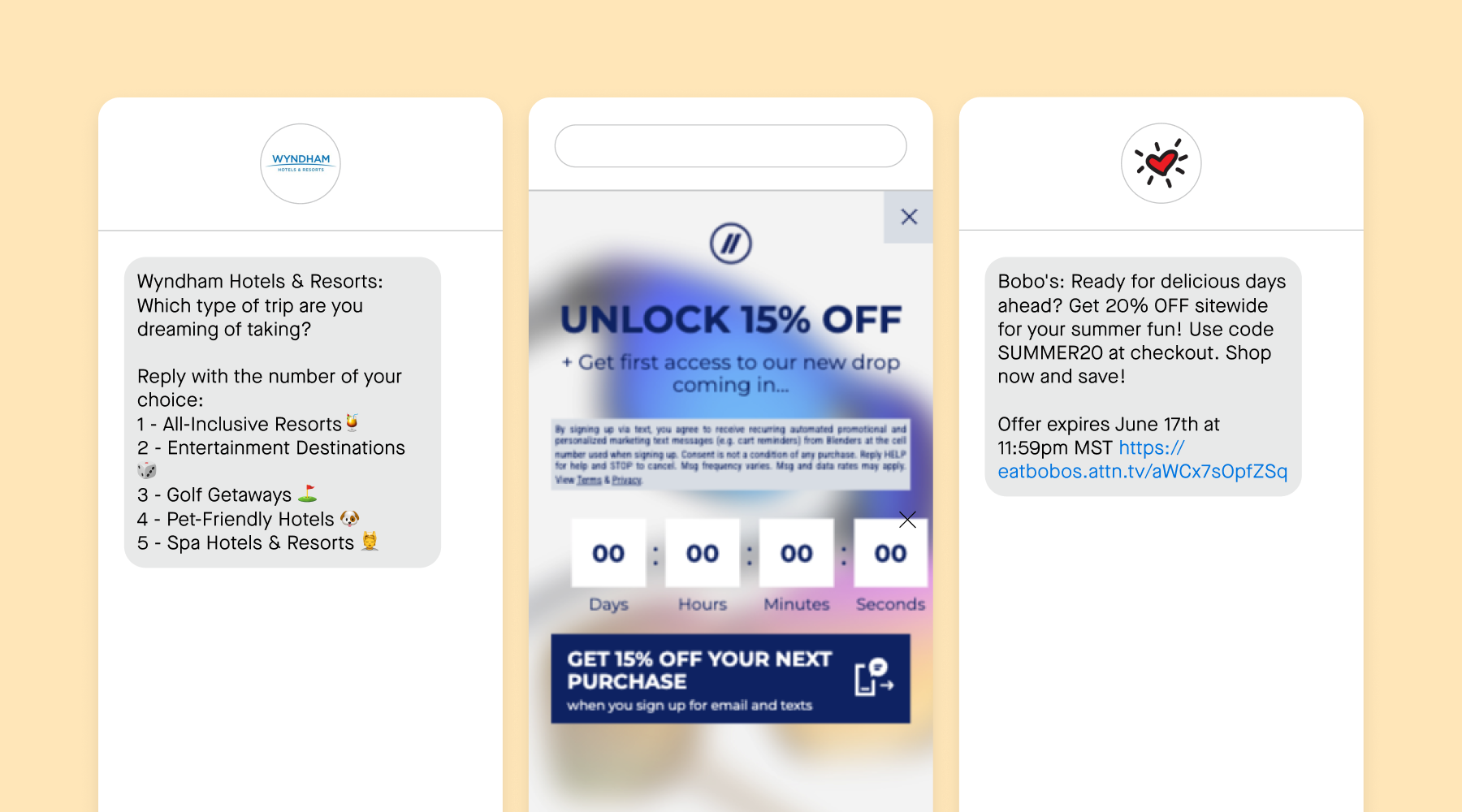
The discussion then turned to summertime campaigns and how increasing campaign frequency can drive more revenue when sending to hyper-targeted audiences. We often suggest retargeting customers who have bought in the last 120 days. We also suggest sending more than one sales message, bookending promotions, sending re-stock notifications, and sending markdown messages that retarget people who have looked at a sale page.
Our CSMs were asked: Which strategies have you found that work really well when increasing campaign sends without breaking the bank?
Braha told us, “To know who to include and exclude from your messages with precision, I suggest utilizing a mutually exclusive, collectively exhaustive (MECE) segmentation strategy for your full list campaigns. MECE ensures that every subscriber fits into one—and only one—defined group, with no overlap and no one left out. By breaking up your full list sends into MECE segments based on your chosen metric (for example, engagement recency), you can quantify how each segment of subscribers perform via Attentive’s segment reporting, and then know exactly who to include or exclude for any given message.”
Willis completely agreed about knowing who to include and exclude from your messages to maximize ROI. He recommended focusing on retargeting as it’s a great way to reach subscribers who have the highest propensity to purchase. In fact, he noted that his clients have found that retargeting messages often have a high revenue per send, and it’s a great way to finalize an individual subscriber’s path to purchase.
He added, “I encourage brands to leverage Attentive’s AI Pro features like Audiences AI to expand their existing segmentation strategy and help identify those subscribers who are most likely to convert, while also excluding those who aren't likely to convert. This increases overall revenue and ROI, and can help save on those messaging costs to use for more retargeting messages.”
We then discussed some of the findings from our 2025 Consumer Trends Report: The State of Personalized Marketing in 2025. A stat that caught a lot of attention was that 61% of shoppers engage with brand messages while hanging out at home or in the evening. We chatted about how this could change during the summer and how marketers can find optimal send times for their specific audience.
Summer is often a great time to optimize an SMS program and do more A/B testing, since it can be a lower-volume season for many brands. A/B testing send times, or using Send Time AI, are also great strategies to ensure you’re reaching the most subscribers at their preferred time to convert.
- Greg Willis, Sr. CSM, Strategic at Attentive
The report also shows that 99% of consumers will share some form of zero-party data in exchange for a product recommendation. What strategies can marketers use to collect this data?
Willis had a great answer and shared, “Some of the brands I work with lean heavily into conversational messaging and/or preference collection from the initial welcome message flow. This helps them assign attributes to their subscribers for more personalized and relevant messaging. This is especially useful for brands who might have very specific audiences for different categories.”
He continued, “A good example is a home decor brand. Some customers may be more interested in wallpaper and other finishings, while others are much more interested in fabric and items in that realm. Understanding why your customers are signing up in the first place is a great way to know who to message and when.”
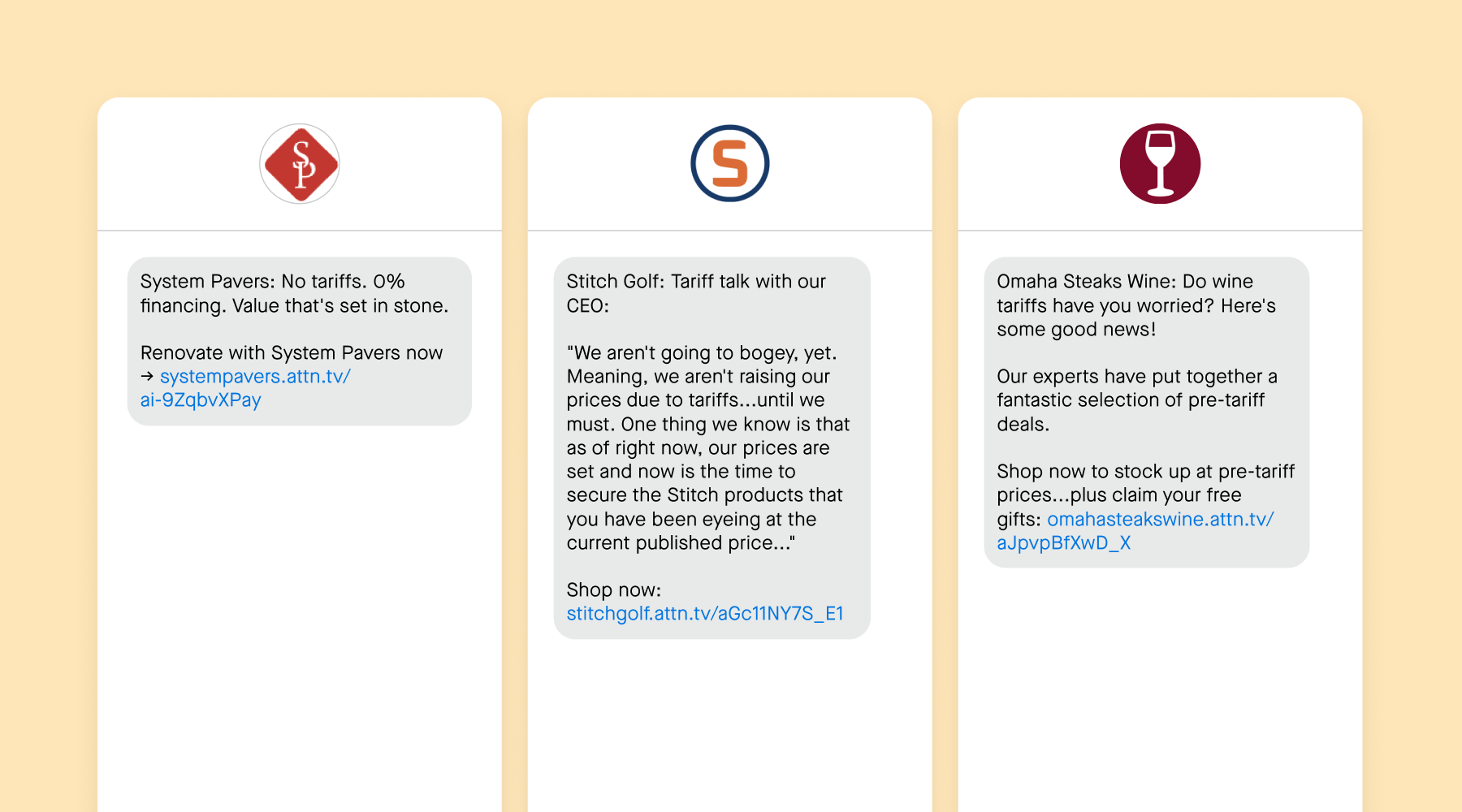
Talking about consumer trends led the conversation to the topic of changes in those trends due to uncertainty in our economic climate. Marketers need to be agile and ready to shift strategies as consumers are hesitant to make purchases. What kind of things can brands put in their marketing messages to help consumers feel more confident about their purchase or putting their trust in a brand?
Willis made the recommendation that you look at your most engaged subscribers and look for segments that have the highest Relative Revenue Contribution (RRC). Then expand this reach to ensure you’re sending messages to the widest target audience within the given segment conditions. Your CSM can help you identify these segments.
Willis said, “I’ve noticed more and more brands wanting to diversify their messaging, shifting from promotions-heavy to more non-promotional or editorial content, that still includes a link back to the site where subscribers can buy. Content around any changes to shipping and return policies, or reassurances about potential cost increases are great ways to diversify content while providing relevant info to your most engaged and loyal customers.”
Transparency, wherever possible, will go a long way in reassuring your audience. Abandonment journeys are a great place to start layering that further context in for subscribers who may be holding off on making a purchase due to uncertainty about how tariffs may impact their potential order.
- Elizabeth Braha, Lead CSM, Enterprise at Attentive
Braha also shared that she’s seen a lot of brands lean into their loyalty programs to incentivize purchases. Customers get benefits in addition to their product purchase, which encourages repeat purchases and increases CLTV.
Recommended reading: Your Five-Point Action Plan for Navigating Tariff Uncertainty
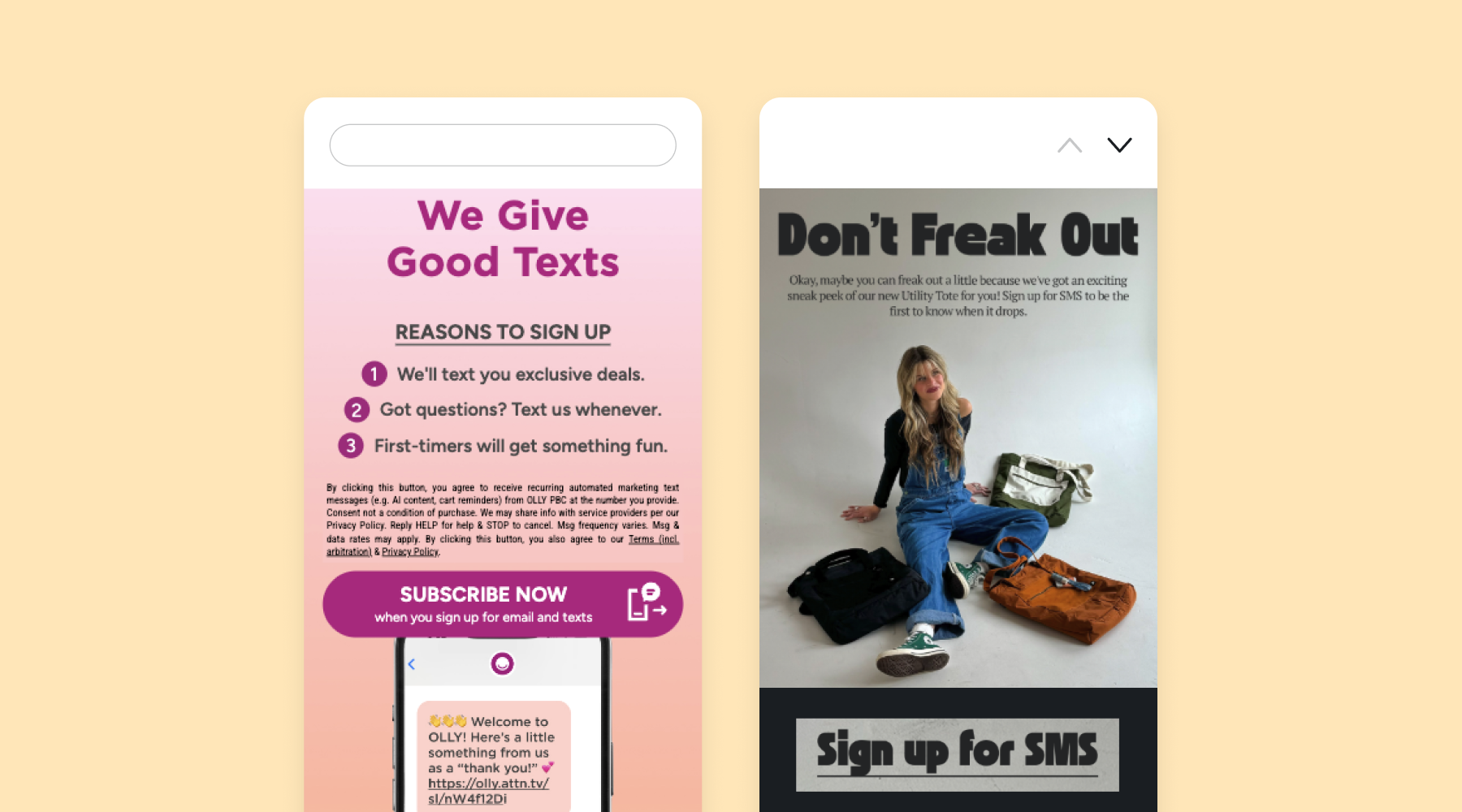
At the end of June, we’ll be halfway through 2025. We’ll have six months’ worth of data around what promotions, CTAs, copy, segmentation strategies, images, etc. work for our audience. How can we use and analyze that data to set up the second half of 2025 for success?
“Outside some of the obvious metrics, like attainment towards your annual revenue targets, I suggest checking on your sign-up unit opt-in rates to determine where there's room to maximize going into Q4. On the flip side, if you’re seeing per message opt out rates above 1% for SMS, that's an indicator that your messaging isn't resonating with your audience and you should consider some adjustments,” said Braha.
Sign-up units aren’t the only way to grow your marketing list for the second half of 2025. Cross-promotion between SMS and email can be a game-changer. Braha recommends that brands add a dedicated email (with a dedicated subject line) to their email welcome journey that promotes SMS sign up. From there, brands should send out a similar campaign email quarterly to their email subscribers who aren't signed up to SMS.
As we round out Q2 and get into Q3, it’s the ideal time to test out any sales strategies that you might want to deploy in Q4. For example, I’ve seen brands more than double their opt-in rate (and thereby welcome journey revenue) by running a giveaway for their sign-up unit incentive. A giveaway of a year of product or a dollar amount shopping spree can both increase opt-in rate and promote channel retention, as subscribers are incentivized to stay on the list to see if they won.
- Elizabeth Braha, Lead CSM, Enterprise at Attentive
Lastly, we want to share some upcoming holidays that you can anchor your marketing campaigns around.
Quick reference of June marketing holidays:
Let’s dive into some of the bigger marketing holidays in June that you should build campaigns for—and show some examples of campaigns we love.
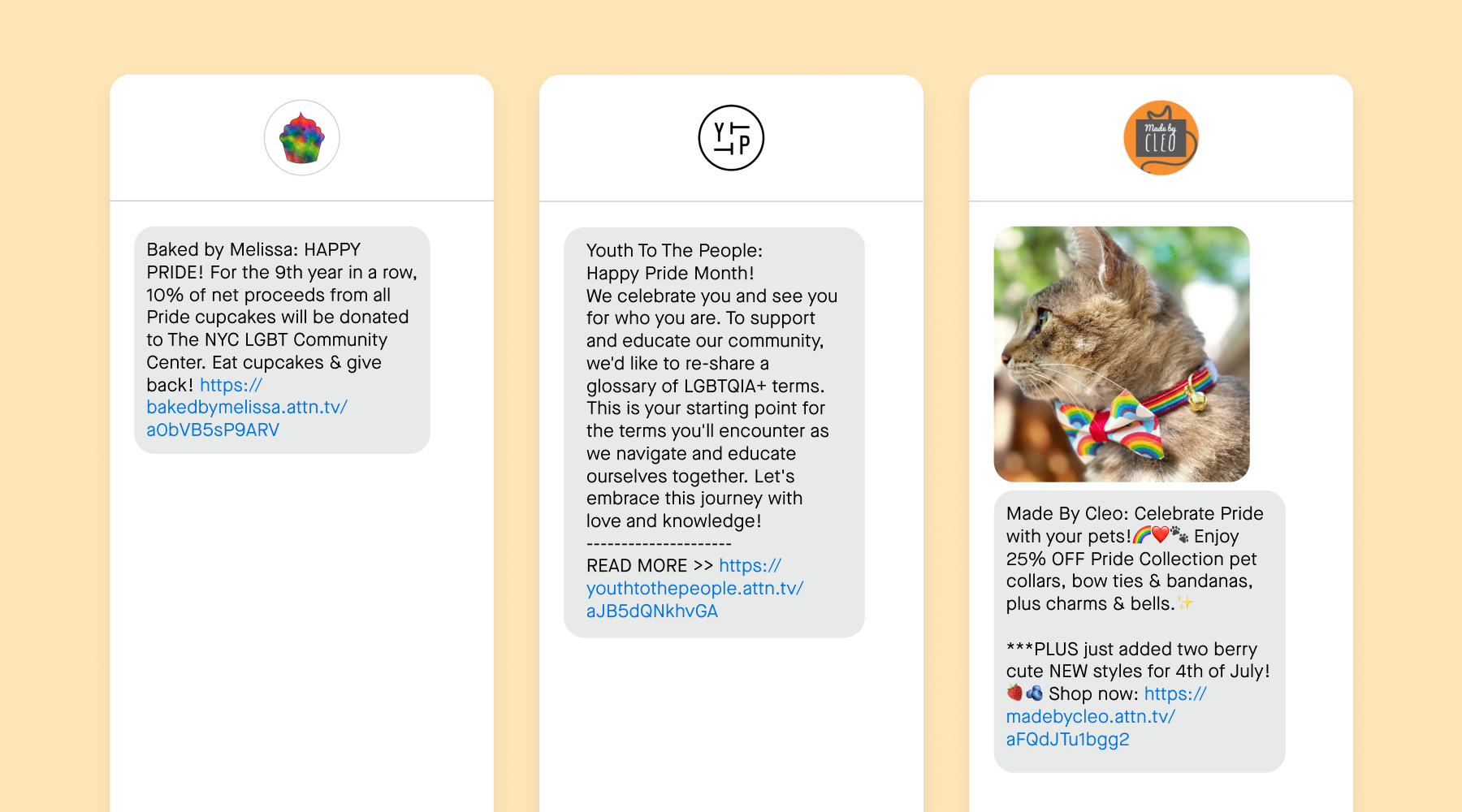
June is Pride Month and the perfect opportunity to show genuine support for the LGBTQ+ community and foster a more inclusive brand image. However, it's crucial to approach these campaigns with authenticity and sensitivity to avoid coming across as performative.
Brands should start by ensuring that their support for the LGBTQ+ community isn't just a one-month effort but a year-round commitment. This can be demonstrated through ongoing initiatives like donating to LGBTQ+ organizations, promoting diversity and inclusion within the company, and featuring LGBTQ+ voices and stories in their content.
When creating Pride Month campaigns, focus on meaningful messages and actions rather than just using rainbow logos and colors. Engage with the community by listening to their needs and concerns. By taking a thoughtful and genuine approach, marketers can build trust and create a positive impact, both during Pride Month and throughout the year.
Pride can be a great time to ensure your LGBTQ+ subscribers feel seen, heard, and supported. If a brand has Pride-specific items, designs, or connections to LGBTQ+ organizations or LGBTQ+-owned businesses, I definitely recommend highlighting that during Pride Month. Focus more so on celebrating this diverse community over promoting sales, since there's so much intersectionality within the community already.
- Greg Willis, Sr. CSM, Strategic at Attentive
Messaging ideas for Pride SMS campaigns:
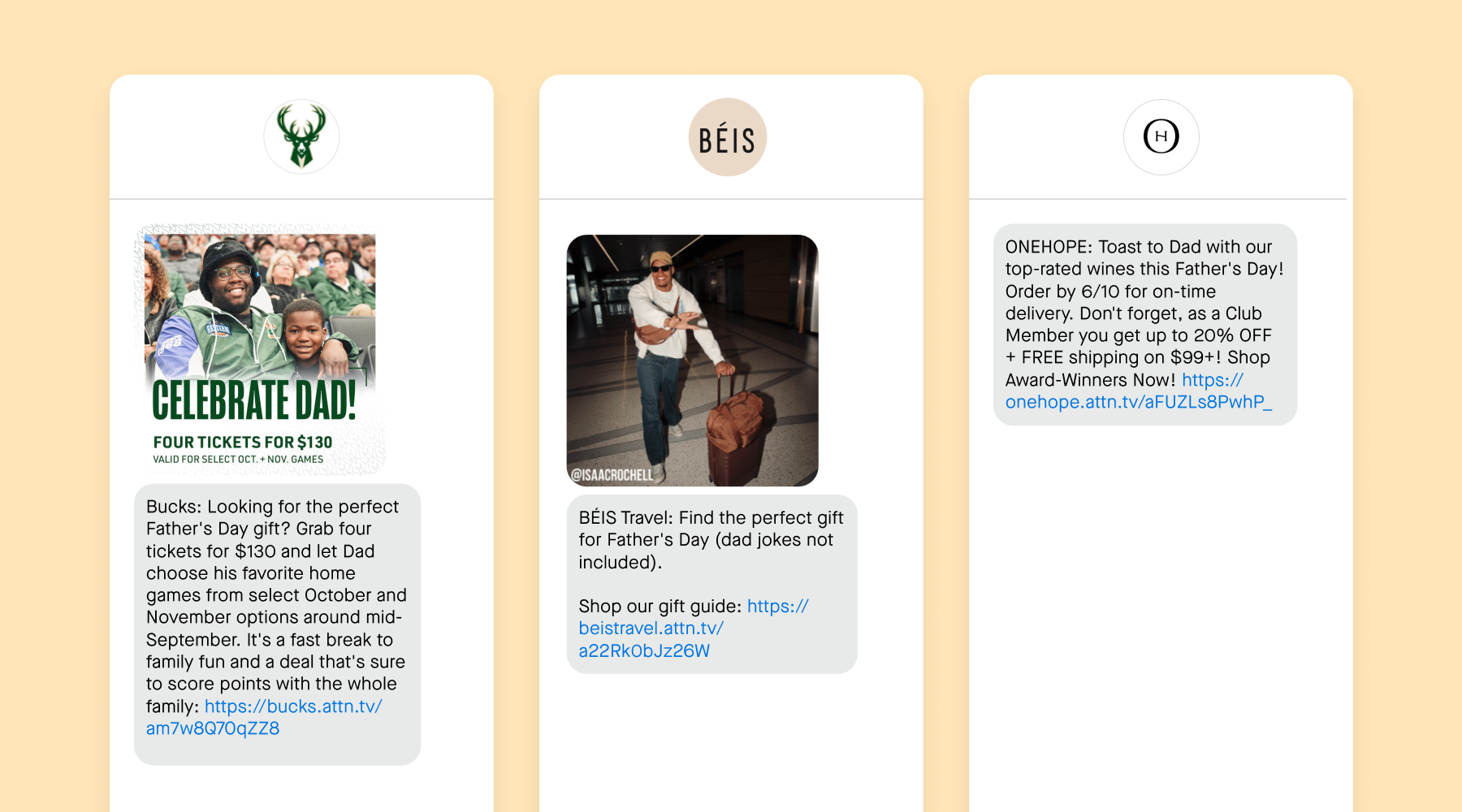
Father's Day campaigns can highlight thoughtful gifts, special experiences, or personalized messages that celebrate the role of fathers. Additionally, Father's Day is a prime time to showcase brand values related to family, tradition, and appreciation, which can deepen customer loyalty and brand affinity.
Willis recommends teasing out any Father’s Day sales right after Memorial Day. He notes this can vary by the brand and vertical, but it goes a long way in keeping momentum going with subscribers who may have missed that big Memorial Day Weekend sale, but also reminds them to start thinking of gift ideas. He shares that marketers should use retargeting to create that sense of urgency and speak to any shipping deadlines to encourage purchases.
I’ve seen a few of the brands that I work with ask their audience if they prefer not to hear about Father’s Day because it can be a sensitive time for some. It's a thoughtful gesture that can go a long way for channel retention.
- Elizabeth Braha, Lead CSM, Enterprise at Attentive
Messaging ideas for Father’s Day SMS campaigns:
It won't be too long after Father's Day that you need to start sending out your 4th of July campaigns. While many start searching for deals and decorations around mid-June, 77% of Independence Day shoppers plan to shop a week in advance, according to Capital One Shopping Research.
Check out our marketing campaign calendar to find key dates for campaigns, orchestration tips across your channels, and SMS templates you can copy and paste.